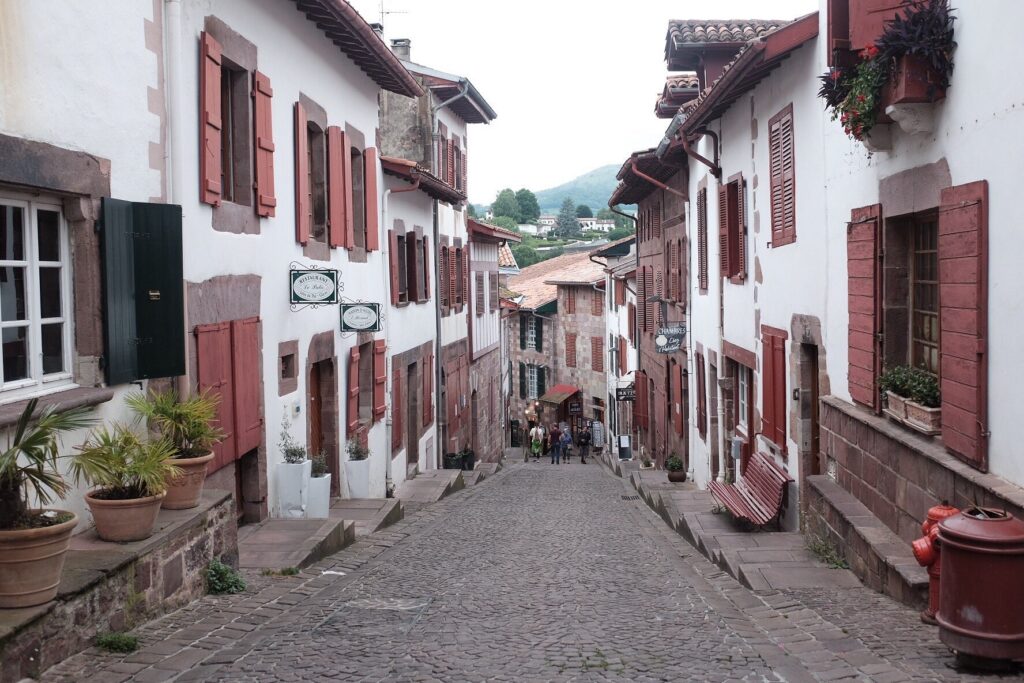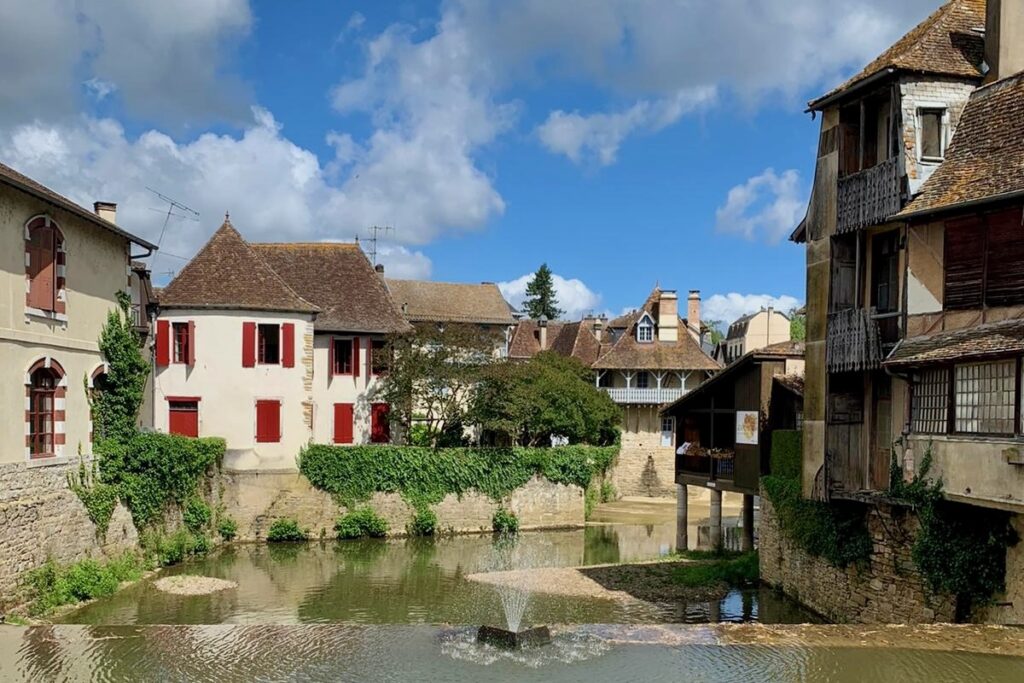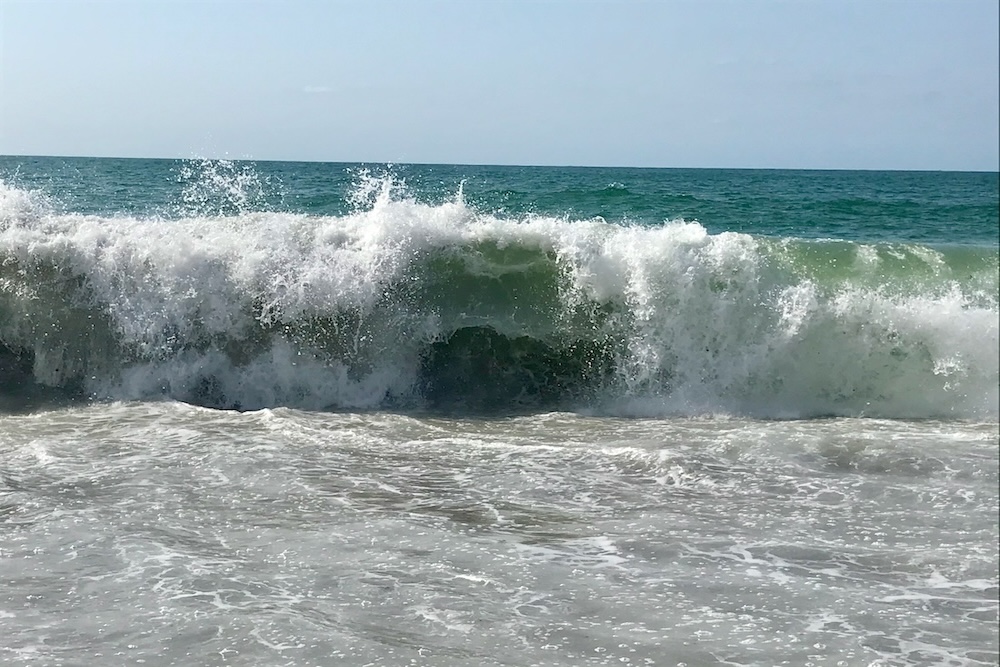The Towns
Saint-Jean-Pied-de-Port
This is a beautiful medieval village which has been made famous by being one on the main starting points for El Camino de Santiago in Spain. This is an ancient pilgrimage to the Cathedral of Santiago de Compostelo. It is full of history and a fascinating place to visit.
A good day to go is a Monday which is market day – good covered market with lots of local produce

Bayonne
Historic city which is famous for its ham and its chocolate – not a bad place to start. It has a great feel to it when walking around. The cathedral in the centre of town is a majestic building. There is a daily covered market with good food. The restaurants around the port have been really well done and are a great place to have either lunch or supper. We have had lunch a couple of times at La Table de Sebastien Grave. There is a three course €45 menu or the simple three course lunch menu with a plat du jour is only €29. Both meals have been delicious
There are also a couple of notable festivals associated with Bayonne.
Foire au Jambon tends to take place over Easter and is a festival dedicated to Bayonne ham – numerous stalls selling and offering samples- and has really fun atmosphere. If you are in the area over Easter and you like ham I would certainly recommend a visit
Fetes de Bayonne in July which I have never been to looks an extraordinary event – compulsory wearing of red and white I think!
For details about other places to visit in Bayonne click here

Espelette
This village is close to St Jean Pied de Port and is a real chocolate box place. The history of Espelette is all about peppers – in fact the espelette pepper has its own appellation d’origine controlee classification. The town’s houses are covered in drying peppers in long garlands which make a magnificent sight. There are some lovely shops to dip into too.
Market day is Wednesday and is a great covered market with obviously lots of products related to Espelette pepper but also other yummy food items too.

Salies de Bearn
This is a city founded on salt which it has been making for over a thousand years. It is again a beautiful town with a lovely centre. The museum of salt is a fascinating place to learn the history of the town and salt production.
It also has a Thermal Spa where you can have a variety of treatments. The link is to the set of brochures with all the treatments I couldn’t find an English translation I’m afraid but it will copy and paste into google translate

Pau
Another town with a lovely feel to it. A bit like the other towns in the region it has no great historical sights but just a great feel and a lovely place to wander round. There are beautiful views of the Pyrennes from the Boulevard de Pyrénées. There is also the Chateau de Pau which is an interesting castle to wander around. For me the highlight of Pau is the food market. This is a treasure trove of deliciousness and the upstairs has an open plan area of places to buy food. This is where I ate the finest sandwich I have ever tasted – a ‘Croque de Canard’ which was hot foie gras and duck on a toasted brioche bun washed down with some local rose – life doesn’t get much better!

Lourdes
This is a curious place. The setting is beautiful sitting in the valley surrounded by mountains. The main reason for visiting is the pilgrimage for catholics to the Grotto of Massabielle. This is the site where in 1858 the Virgin Mary is said to have appeared to a local girl Bernadette and the waters from the grotte are claimed to have healing properties. Regardless of your religious beliefs the Sanctuary of our Lady of Lourdes is a beautiful set of buildings dedicated to the Virgin Mary.
Also in Lourdes is Chateau Fort de Lourdes which is also worth a visit.
As well as visiting the town Lourdes is a good starting point to enjoy the Pyrenees. There is lots of walking in the Pyrenees one can access from Lourdes as well as cycling routes. Depending on your levels of fitness cycling around Lourdes is spectacular – see cycling below. The tourist office has a great cycling map with a range of cycling routes labelled blue, red black which range from blue 31km with 490m elevation to black runs like the Tourmalet 99km with 1840 elevation! The routes can also be found online.

San Sebastien
This wonderful city is also within striking distance of the Pyrénées Atlantique region. This is a city with a great vibe. The centre of the city is a hive of eating places selling delicious tapas (or pintxos as it is known here). There are also some serious restaurants here as well. The city is the proud owner of 19 Michelin stars. In addition to the food the old town and the old fortress are great places to look around. Finally it also has a great beach to cool off if you fancy a dip. There are many guides to San Sebastien I have given a link to one tourist info site below. Restaurants come and go but when I visited San Sebastien in 2021 the restaurants below were all highly recommended. We visited Bodega Donostiarra, Gatxupa and Bar Nesto and they all lived up to expectations.

Cambo Les Bains
This is a little village but has a wonderful Villa which is worth a visit. It is the Villa Arnaga and was built by Edmond Rostand who was the author of Cyrano de Bergerac. It is built in a Basque style but with a mixture of formal French and English Gardens. It makes a great little half day trip if you are in the area.
There is also a Spa here where you can go for various treatments

Navarrenx
Another hugely picturesque bastide town. Very pretty square and fascinating old fortified walls that you can walk around. This is one of our local villages and market day is a Wednesday – it is not the biggest market but has a hugely authentic feel and the quality of the food is excellent. Navarrenx also has not one but two fantastic butchers where you can buy the most delicious meat.




